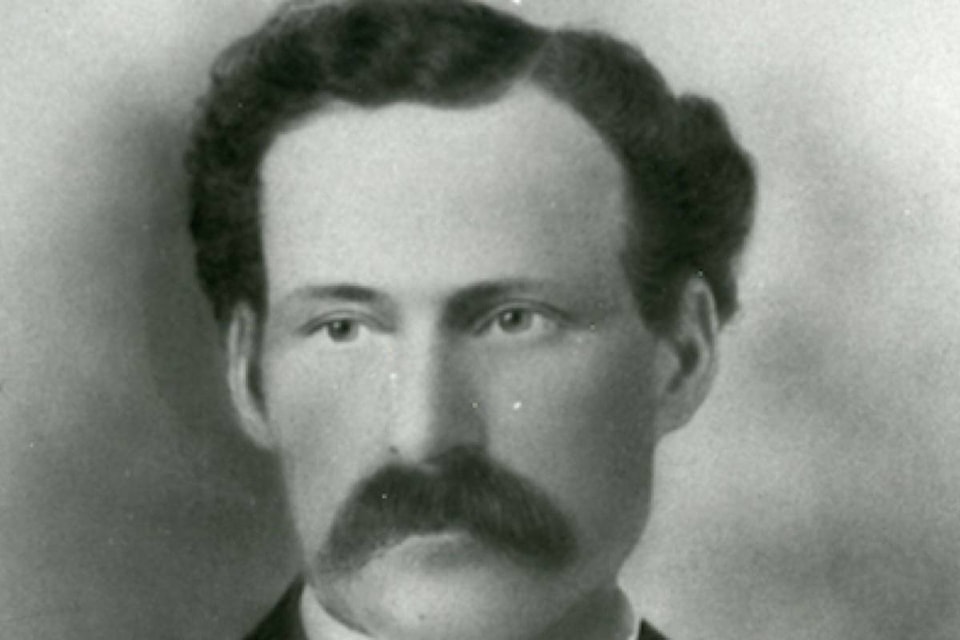This Saturday, at 10:30 a.m. at the Sunnybrook Farm Museum, the Kemp family will be honoured with the 2019 Golden Furrow Award (Pioneer Farm Family of the Year).
It is a fitting tribute to one of central Alberta’s oldest farm families, who have contributed a great deal to our community over the past 137 years.
William Hazelwood Kemp was born in Carleton County near Ottawa on March 14, 1860. After working on the family farm, he decided to head for the emerging Canadian West to seek opportunities and adventure.
He arrived in Winnipeg in 1879 and worked on farms in the area. He also cut railway ties for the CPR at Kenora, Ont.
In May 1881, he joined a freighting group travelling across the Prairies. The trip was so long and challenging, that by the time Kemp reached Edmonton in the fall, he had worn out his shoes and was now walking barefoot.
After working in sawmills and lumber camps, he joined up with his cousins, George and Jim Beatty. They decided to take up land at the Red Deer River Crossing, where the Beattys had been working as surveyors.
The men spent the night of Sept. 29 in a small shack by the Red Deer River that was later known as Sad Hollow Cabin. The next morning, they woke up to 74 centimetres of snow on the ground.
Despite the sudden inclement weather, they decided to continue with their plans to take up homesteads.
The winter of 1882-1883 was very mild. In February, William was able to break the first land in central Alberta, using a team of oxen.
The early crops proved to be very good ones. In 1893, William’s Ladoga wheat won a prize at the Chicago World’s Fair (Columbian Exposition). He also won prizes at local and regional fairs for his grain and vegetables, as well as his light and heavy horses.
Meanwhile, in 1887, although he was still a bachelor, William became a trustee with the newly organized Red Deer Public School District. He also helped to build the first log schoolhouse.
In the 1890s, William moved to Innisfail, where he started a livery and dray business. He later added farm implements.
In December 1897, he married Katy Jane Lundy, who had been born in Manitoba, but had moved with her family to Innisfail, where her father operated a hotel. William and Katy had five sons and one daughter – Elmore, Lynnford, Hazelwood, John (Jack), Albert and Edith.
In 1905, the Kemps purchased the large brick house on the southeast side of Innisfail, which had previously belonged to Dr. Henry and Barbara George.
The Kemps were very active in the community. William served for two years on the Innisfail town council. He acted as a local inspector of public works. He was also active with such groups as the Innisfail Agricultural Society, IOOF and the Innisfail Curling Club.
In 1912, William went back to farming full-time and sold off his businesses in Innisfail. Tragically, he died suddenly in January 1921.
As a single mother with young children, Katy supported the family by taking in boarders and renting out rooms in the large family residence in Innisfail.
In 1943, Jack and his wife Betty (Clarke), who was a granddaughter of Rev. Leonard and Caroline Gaetz, started farming west of Innisfail.
They had four children – Gerry, Bob, Peg and Jackie. In 1953, the farm became a dairy, an operation that continues to be run by the family to this day.
Over the years, the Kemps have remained very active in the community, often with farm-related organization, such as 4-H and various sports groups, including curling and softball.
They have been active with many groups and organizations, such as the Innisfail Co-op, Federated Co-operatives, the Co-operators, Big Bend Rural Electrification Association, Parkland Credit Union (now Servus), Goldeye Foundation, International Farm Exchange Association, Innisfail Historical Village, Dr. George House Preservation Society and many others.
Succeeding generations have continued to distinguish themselves and be active in various farm and community organizations.
For example, Rick Kemp won the Alberta Esso Farm Competition, a test of both physical and mental skills.
Tim Kemp served on the Red Deer College board of governors.
This is but a sampling of all the groups and organizations in central Alberta and across Western Canada that have benefited from the talents and commitment to the community of the Kemp family since 1882.
Red Deer historian Michael Dawe’s column appears Wednesdays.
